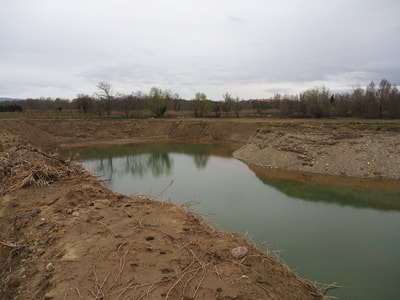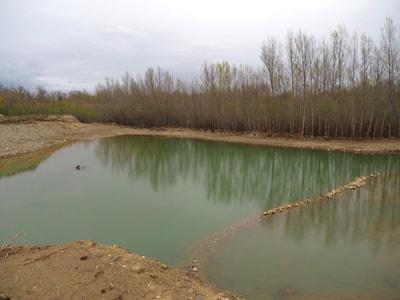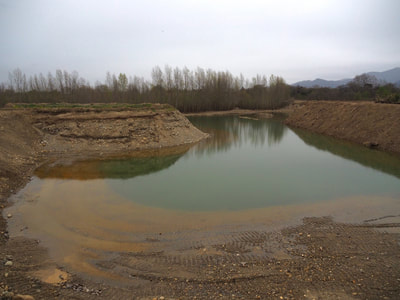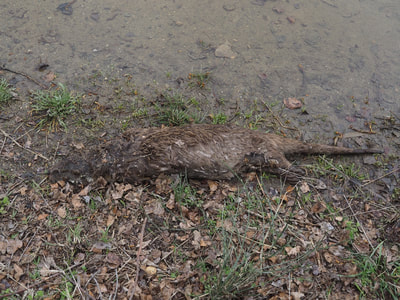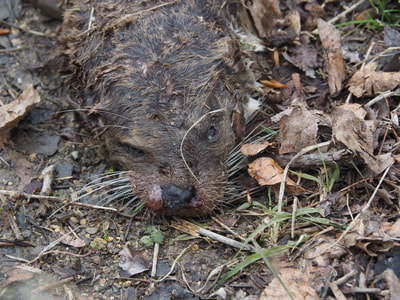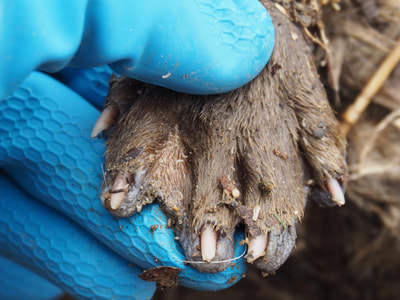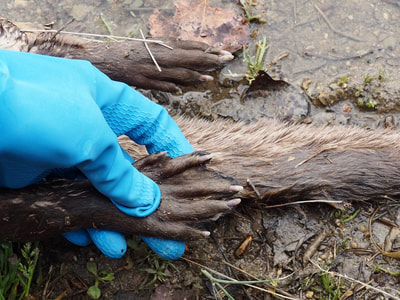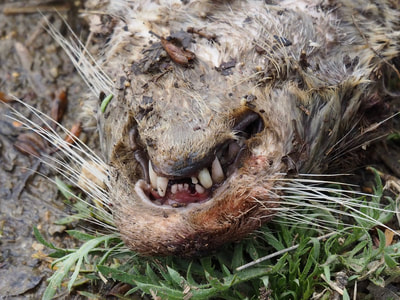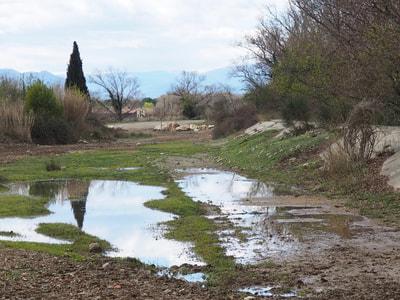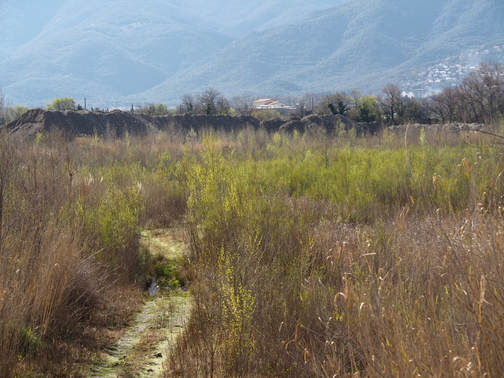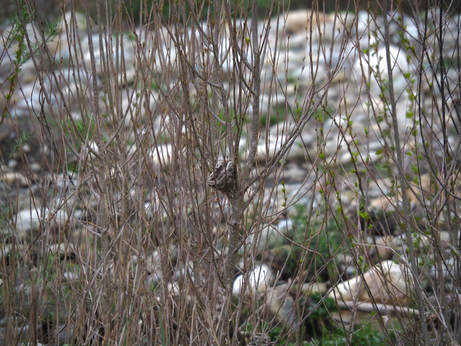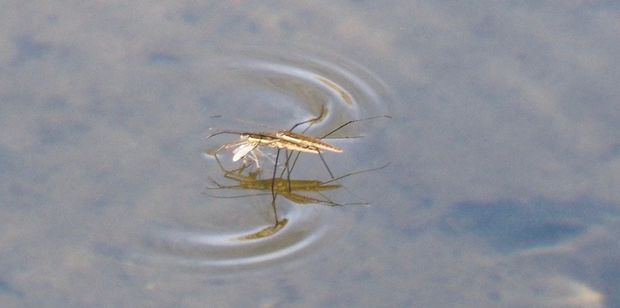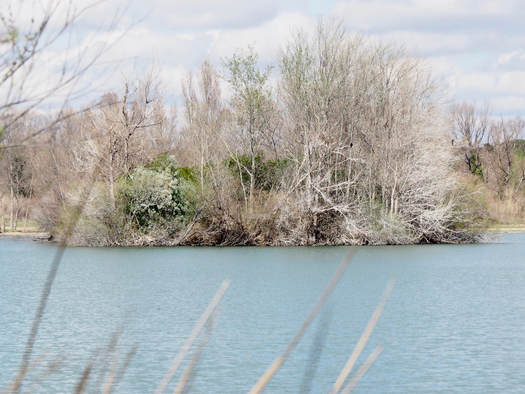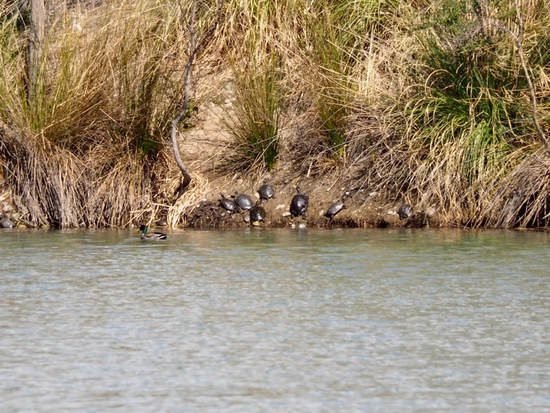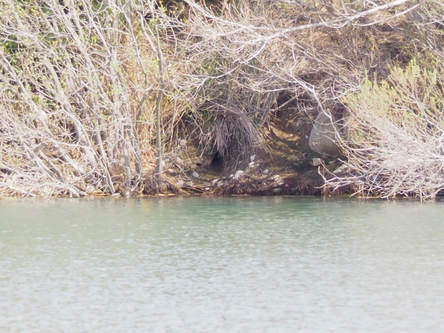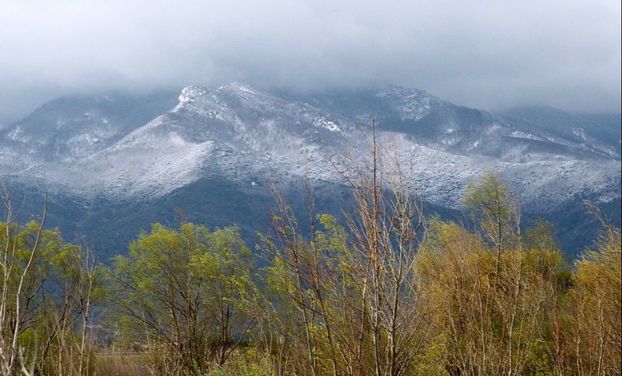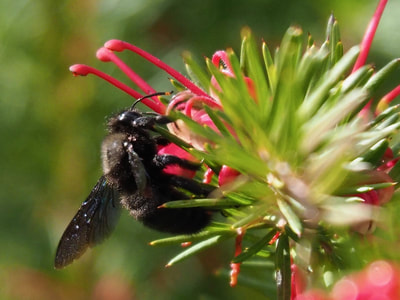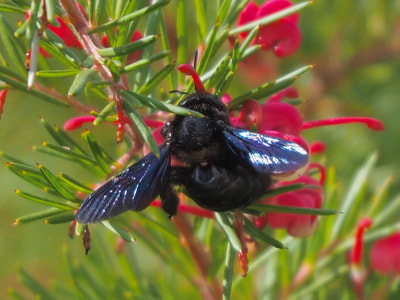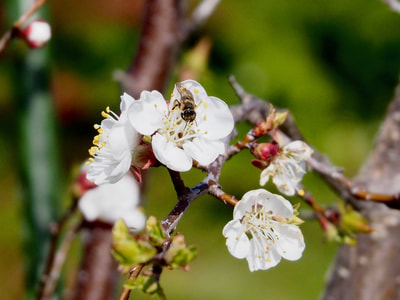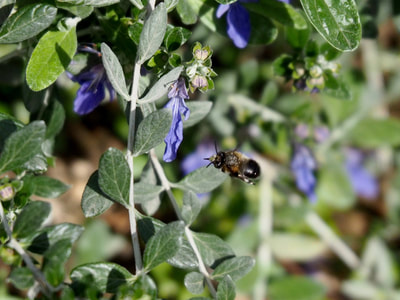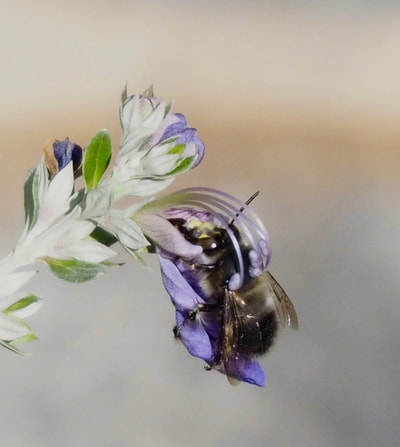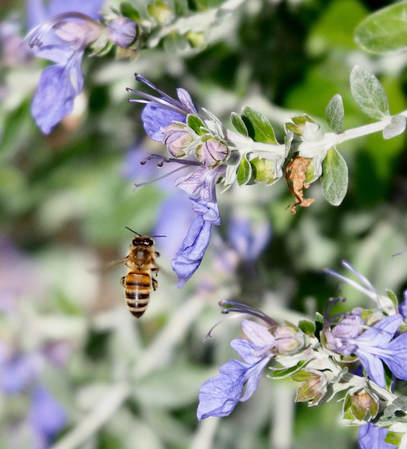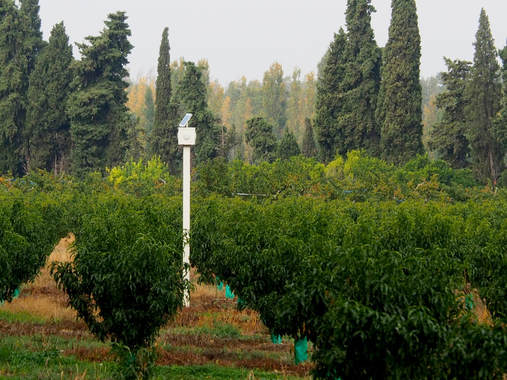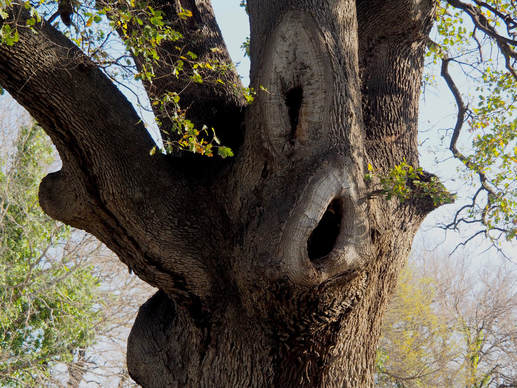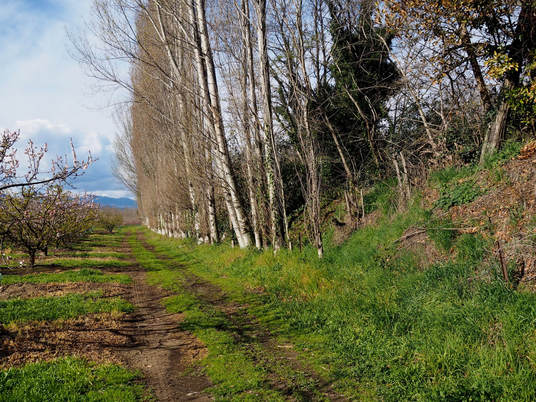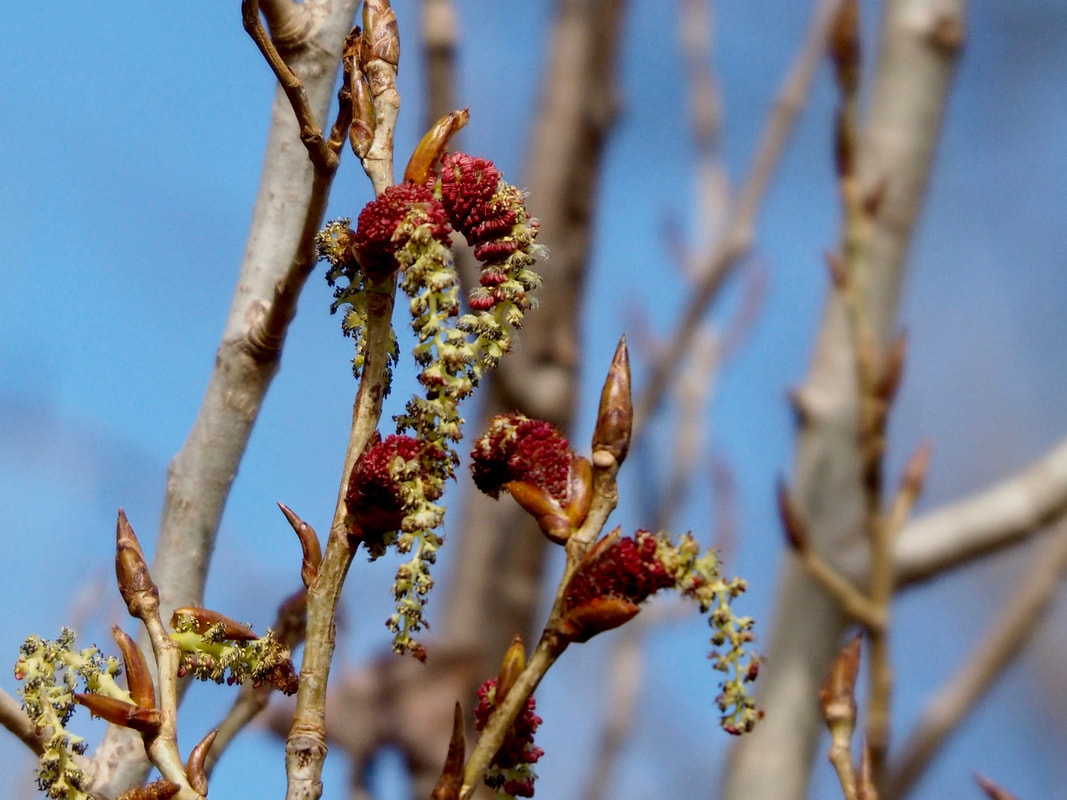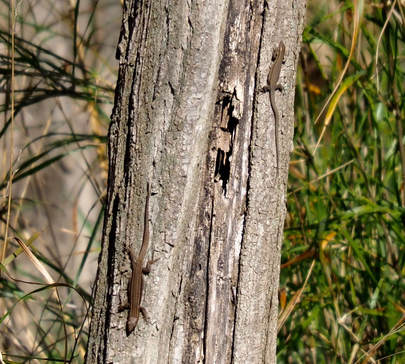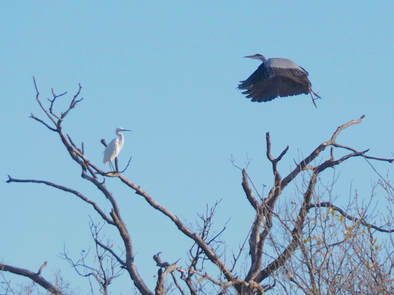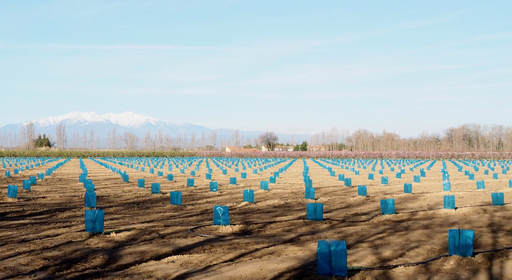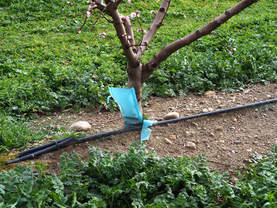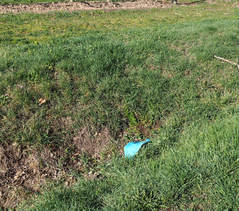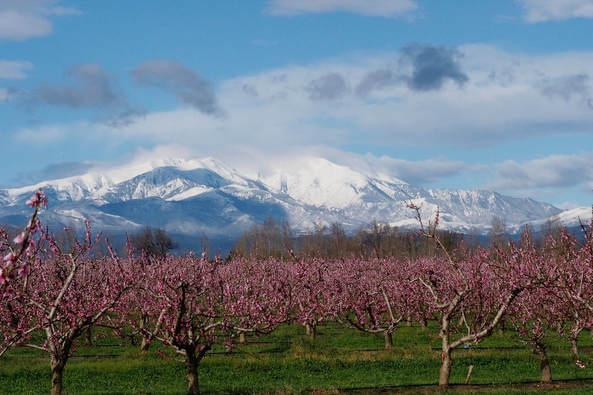Just over a week ago when I was at Als Bachous (see blog of 24th March), I didn't explore beyond the western side of the lake, so decided to do so yesterday. After about 15 hours of rain three days earlier, I thought there was a fair chance of finding otter tracks in mud around the Tech.
It wasn't a dawn expedition, and even though it was a dull, slightly showery morning, there were plenty of flies around - attracting swallows and house martins. This was only the second time I've seen house martins this year, and the first time for swallows (but the local bird group reports having seen both of those, plus alpine swifts, at St Nazaire as early as 2nd March). Further on, three ducks took off across the water. Significantly smaller than mallard, with a distinctive flash of white under the wing, they were reminiscent of, but not, sandpipers. On my way back later, I would see them again, at some distance away on the water. Even with binoculars it was impossible to pick out markings, other than a lot of white on the head of two of them. Later, comparison of poor quality photos with my book, would identify them as garganey ducks. A species I must have seen at some time in my life before, but don't recall. Two males and one female. The white on the male's head is a bold white stripe over the eye. Males also have pretty silver-white patterning on their sides, and pinkish-brown backs. Very striking, and hard to mistake for anything else. My book tells me they will only be passing through here, not breeding.
Once over the steep bank beyond the western shore, I was delighted - sort of - to solve the mystery of the earth mounds I talked about in my previous blog. A new lake has been dug out. This was a huge surprise, and I wonder if the intention is for another fishing lake or nature reserve. I seem to remember that the GOR was interested in purchasing the land at one point, so their involvement is possible. I shall ask them. My delight was tempered only because the original quarry-turned-marshland seemed to have been well populated with amphibians - reptiles too no doubt. Many creatures will have lost their lives during construction work.
Click on photos below for larger image
Apart from a lone sandpiper, the river was quiet, but a big, intriguing, stationary blob in the water upstream had me clambering over, under and around trees and brambles to get a closer look. For sure it was no animal, but I was somewhat taken aback to discover it was an abandoned jet ski! It might have drifted down from elsewhere but rather looked as though it had been brought to a sudden halt by floating tree debris.
I had left the river again and was making my way back towards the main lake, skirting the concrete flood barrier, when the sight of a dead animal brought me to a sudden halt. How does the saying go? Be careful what you wish for.
It was an otter.
I know they all die eventually, and this one might have succumbed to natural causes, but her position, right by this wide track used by earth moving vehicles for the new lake, makes me suspect she was in a collision. Very unlucky if that's the case, because otters are generally nocturnal. I couldn't see any sign of attack by another animal, but blood around her nose suggests to me that her head was hit. One canine tooth was broken and several small front teeth were missing. That could be down to age for all I know, and her red, swollen gums might indicate gum disease (can otters suffer from that?). Equally, it could point to trauma as a result of a head injury - or maggot activity? So very sad to see, whatever the cause.
Because her body wasn't yet too decomposed (maggots were present but tiny), it did give me an opportunity for a very close look and, in the end, I made a second visit, armed with rubber gloves and tape measure! Perhaps I missed my calling as a pathologist.
If you're squeamish, scroll down past the next set of pictures. If you're not, click them for larger images.
It's doubly sad that this female was only a few hundred metres from where Bruce discovered the skeleton of another, back in 2009, close to the lake. At least I now have incontrovertible proof that otters are still present in this area - I just wish I hadn't discovered it this way. But where there's one, there will be more, so my quest to see a live one continues.
